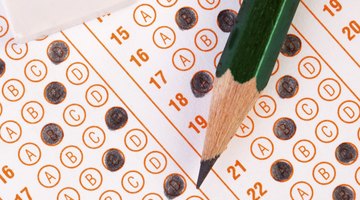The first few years of school can be exciting and fruitful for the child as well as the parent. A well-rounded primary education will create and offer opportunities to kids of all ages as they navigate through the education system. A balanced curriculum with cognitive instruction allows a student to thrive and master the basics of reading and writing.
Throughout the year, children will take a standardized reading test to measure where they fall within their peers’ level of knowledge and comprehension. The reading assessment tests that a teacher administers can help them to offer the right instruction to increase a child’s reading and comprehension fluency.
Standardized Reading Tests
The tests are given once a year or up to three times a year depending on the region and testing chosen by the school. Parents or a medical professional can give the test. However, the tests are generally given by schools to ensure a child is progressing with his reading level and is keeping up with his peers.
Here is a list of standardized tests that are used by schools because of their superior reading assessment tools:
- Comprehensive Test of Phonological Processing (CTOPP)
- Dynamic Indicators of Basic Early Literacy Skills (DIBELS)
- Iowa Test of Basic Skills (ITBS)
- Phonological Awareness Test (PAT)
- Texas Primary Reading Inventory (TPRI)
A standardized reading test is given when the child first enters school and is administered at least annually to monitor his progress. Reading increases logic and problem-solving skills.
Comprehensive Test of Phonological Processing
This phonological awareness, memory and naming test takes 40 minutes. It is given to people aged 6 to 24 years old. A CTOPP-2 can be given to children as young as age 4. The test can be administered by a parent, teacher or physician or at a testing center in some cases.
The CTOPP is used to:
- Document an individual's progress in phonological processing
- Determine strengths and weaknesses of the person’s phonological ability
- Measure an individual’s ability to remove the phonological segments from spoken words to form other words
Dynamic Indicators of Basic Early Literacy Skills
The DIBELS assessment test measures early literacy skills through short tests. The one-minute tests are used to regularly monitor a child’s literacy development and early reading skills. The DIBELS results can measure a child’s future literacy proficiency. They give feedback to the teacher for class-level phonic and literacy monitoring as a child progresses through school.
Iowa Test of Basic Skills
This nationally administered set of exams covers a wide swath of early cognitive abilities. The ITBS assesses the language arts, reading, science, math and social sciences. It is given to children as young as 4 years old and can continue through college age depending on the need to be assessed.
The goal of the test is to assist teachers in providing more detailed instruction to individual students based on the test results. The tests are given at school beginning in kindergarten, although a parent can also conduct the test at home.
Phonological Awareness Test
There are six core subjects of the Phonological Awareness Test:
- Rhyming
- Segmentation
- Isolation
- Deletion
- Substitution
- Blending
It is given to children age 5 to 11 by teachers, parents or a medical professional. It takes approximately 40 minutes and concentrates on a child’s phonemic decoding skills, phoneme-grapheme correspondence and phonological awareness.
Texas Primary Reading Inventory
This one-on-one early reading test is given by the classroom teacher. It is administered three times a year – beginning, middle and end – for all elementary school grades. The TPRI is given over a two-week period to the entire class. It has a screening section and inventory section for each grade level to give the teacher an effective way to guide a student to better reading fluency.
Related Articles
References
Writer Bio
Kimberley McGee is an award-winning journalist with 20+ years of experience writing about education, jobs, business trends and more for The New York Times, Las Vegas Review-Journal, Today’s Parent and other publications. She graduated with a B.A. in Journalism from UNLV. Her full bio and clips can be seen at www.vegaswriter.com.











